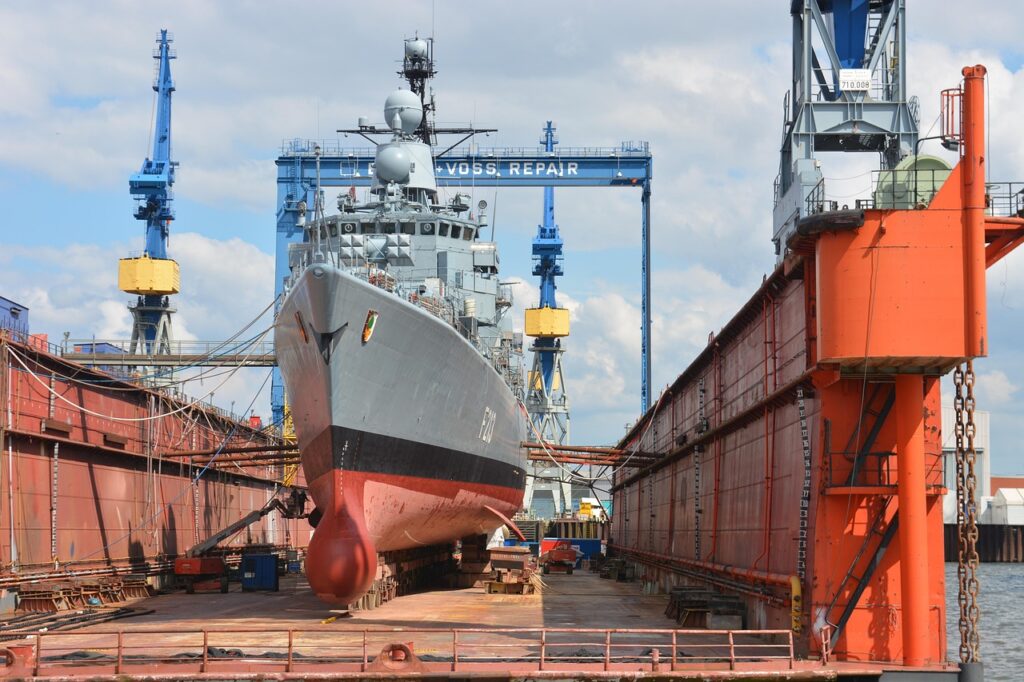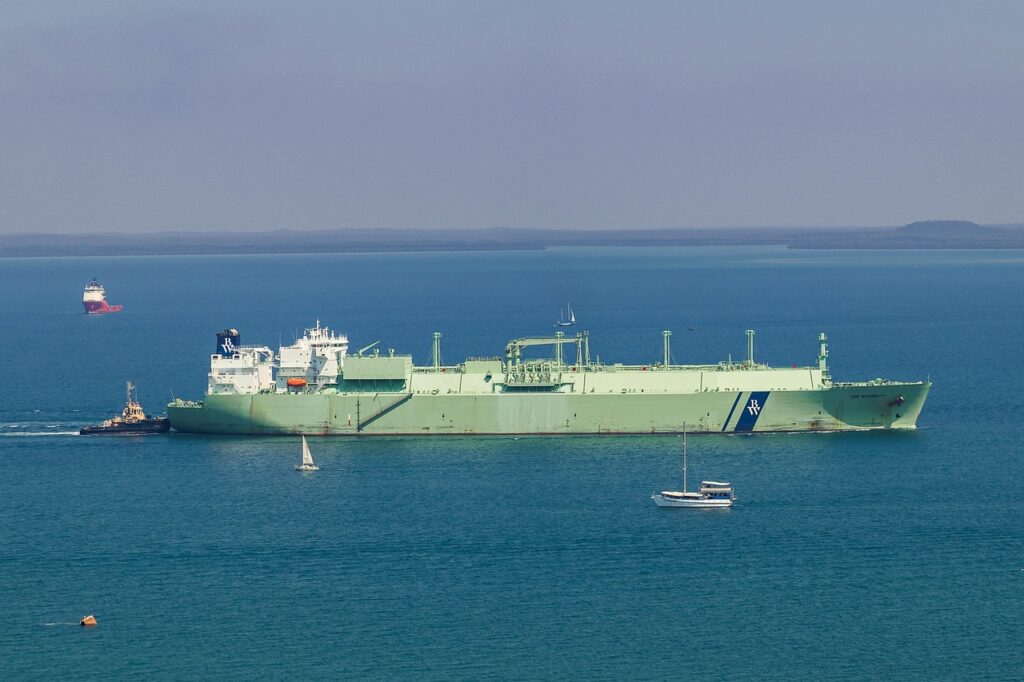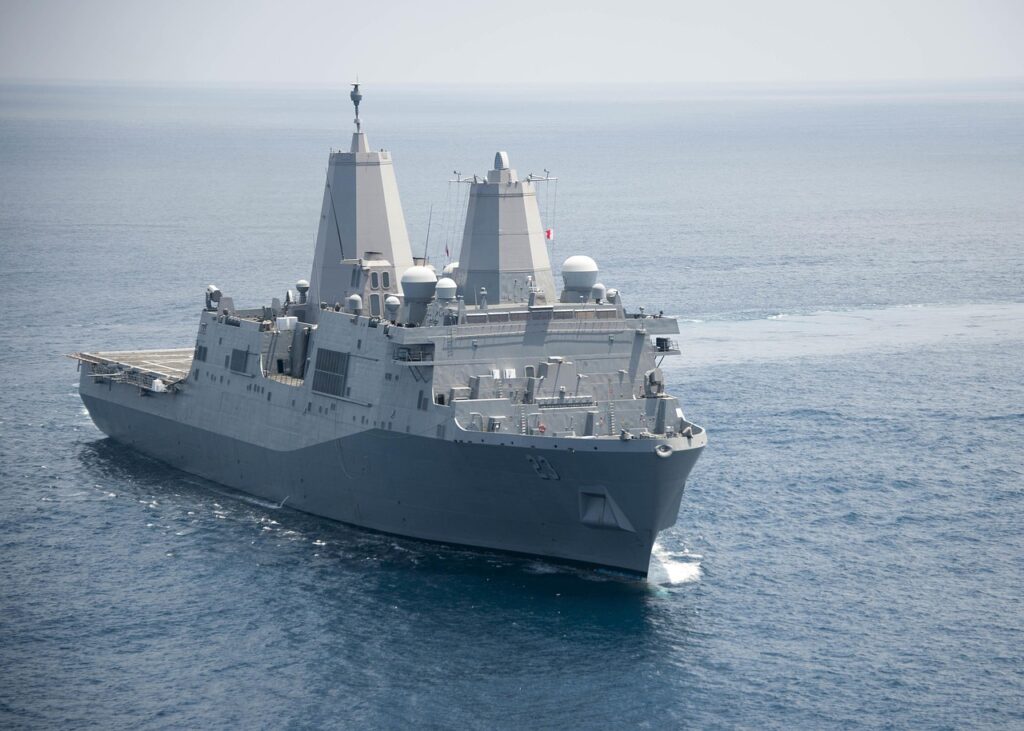
The global maritime landscape is undergoing a profound transformation, driven by the unprecedented expansion of China’s People’s Liberation Army Navy (PLAN). For decades, the United States Navy has maintained an unchallenged supremacy, its aircraft carriers symbolizing a global reach that few could aspire to. However, this long-assumed naval balance is demonstrably shifting. Beijing’s ambitious program of naval modernization, marked by a rapid increase in fleet size and technological sophistication, signals a clear intent to redefine the balance of power on the high seas. With a current fleet of over 370 ships and submarines, the PLAN now stands as the world’s largest navy in terms of sheer numbers, a development that commands rigorous analytical scrutiny.
This significant buildup is not merely a matter of numerical superiority; it represents a strategic pivot designed to project power, safeguard vital trade routes, and assert dominance across the Indo-Pacific and beyond. As official assessments and credible analysis indicate, China could field four to six aircraft carriers by the 2030s, with its new catapult-equipped Fujian already nearing service. These developments, alongside advancements in surface combatants, submarines, and supporting infrastructure, underscore a resolute push towards becoming a truly world-class maritime force. Yet, as with any rapid transformation of this scale, the true measure of its global impact requires an in-depth examination, moving beyond superficial observations to dissect the core components of its burgeoning strength.
This initial section of our analysis will meticulously explore the foundational pillars of China’s naval ascendancy, dissecting its remarkable shipbuilding capacity, the strategic evolution of its carrier fleet, and the technological advancements in its warships and airpower. We will delve into the ambitious vision that drives this expansion, examining how Beijing is leveraging its industrial might and strategic planning to construct a navy capable of reshaping the geopolitical landscape. By focusing on these key areas, we aim to provide an authoritative account of the tangible progress that has positioned the PLAN as a formidable player in the unfolding drama of 21st-century maritime power.
1. **China’s Rapid Fleet Expansion and Shipbuilding Dominance**The sheer scale of China’s naval expansion is, to borrow an expert’s phrase, “eye-watering.” In just two decades, the nation has ramped up its investment in shipbuilding to an extraordinary degree, establishing a commanding lead that far surpasses any other country. This industrial prowess is not confined to commercial vessels; it directly fuels the rapid growth of the People’s Liberation Army Navy (PLAN), transforming it into the world’s largest navy by hull count.
Data from the Center for Strategic and International Studies (CSIS) reveals the astonishing pace of this development. Between 2019 and 2023, China’s four largest shipyards—Dalian, Guangzhou, Jiangnan, and Hudong-Zhonghua—collectively produced an astounding 39 warships. These vessels represented a combined displacement of 550,000 tonnes, a figure that dramatically eclipses the total displacement of many established navies, such as the UK’s Royal Navy at an estimated 399,000 tonnes. This capacity to “churn out warships” at an unparalleled rate represents a profound strategic advantage, as highlighted by Alexander Palmer from the CSIS.
The underlying strength of China’s shipbuilding capability is further underscored by its global dominance in commercial orders. More than 60% of the world’s shipbuilding orders in the current year have gone to Chinese shipyards, demonstrating an efficiency and speed unmatched internationally. Experts like Nick Childs, a maritime expert with the London-based International Institute for Strategic Studies, note that “The Chinese shipbuilding capacity is something like 200 times overall that of the United States.” This remarkable industrial base, capable of rapidly constructing both civilian and military vessels, ensures a continuous and accelerating trajectory for China’s naval growth, positioning it to sustain a prolonged war effort by quickly replacing or augmenting assets.
Military equipment: Naval fleet
Categories: All articles needing additional references, Articles needing additional references from December 2023, Articles with short description, CS1 maint: multiple names: authors list, Commons category link is on Wikidata
Summary: A naval fleet is the largest operational formation of warships in a navy, typically under a single command and organized for strategic missions. While modern fleets are permanent, multi-role forces (e.g., carrier strike groups), historical fleets were often ad hoc assemblies for specific campaigns. The term “fleet” can also synonymously refer to a nation’s entire navy, particularly in smaller maritime forces.
Fleets have shaped geopolitics since antiquity—from the trireme fleets of Athens to the nuclear-powered carrier groups of today—enabling power projection, trade protection, and deterrence. Multinational fleets, such as NATO’s Standing Maritime Groups, demonstrate their continued diplomatic-military role.
Get more information about: Naval fleet
Read more about: Beyond the Spectacle: What China’s Military Parade Reveals for Asia and a Reordering World

2. **The Growing Carrier Fleet: From Liaoning to Fujian**China’s journey into the realm of aircraft carrier operations commenced in 2012 with the commissioning of the Liaoning. This vessel, a refurbished former Soviet carrier, served as an invaluable initial platform for gaining operational experience and training personnel. It was followed in 2019 by the Shandong, China’s first domestically built aircraft carrier. Both the Liaoning and Shandong are conventionally powered and utilize a ski-jump launch system, which, while effective, places certain limitations on the weight and type of aircraft they can launch.
The true leap forward in China’s carrier capabilities is embodied by its third carrier, the Fujian. Launched in 2022 and undergoing successive sea trials since 2024, the Fujian is also conventionally powered but incorporates a game-changing advancement: electromagnetic catapults, also known as CATOBAR (Catapult Assisted Take-Off But Arrested Recovery) systems. This technology significantly enhances the carrier’s operational flexibility and offensive potential.
The shift to CATOBAR systems, as noted in the context, is a critical development. It enables the Fujian to launch “heavier aircraft with more fuel and payload than ski-jump ships.” This capability is absolutely “key for early-warning planes and next-gen fighters,” allowing for a more diverse and capable air wing. The Fujian is expected to embark a larger, more capable air wing compared to its predecessors, although precise totals are not yet confirmed. This technological evolution marks a clear progression from experimental platforms to increasingly sophisticated instruments of power projection, bringing the PLAN closer to parity with leading global naval forces in terms of carrier functionality.
Military equipment: Chinese aircraft carrier Liaoning
InfoboxCaption: Liaoning (16)
ShipImage: Aircraft Carrier Liaoning CV-16.jpg
ShipCaption: The aircraft carrier Liaoning in Hong Kong in 2017
Builders: Dalian Shipbuilding Industry Company
Operators: navy
ClassBefore: [object Object]
ClassAfter: Chinese aircraft carrier Shandong
TotalShipsCompleted: 1
ShipCountry: China
ShipFlag: shipboxflag
ShipName: nobold
ShipNamesake: Liaoning
ShipOrdered: 1983
ShipBuilder: Dalian Shipbuilding Industry Company
ShipLaidDown: 6 December 1985
ShipLaunched: 4 December 1988
ShipCompleted: 2011
ShipFate: Transferred to the Chinese navy, 2002
HideHeader: title
ShipOriginalCost: US$
ShipCommissioned: 25 September 2012
ShipStatus: In active service
ShipMotto: Simplified Chinese
ShipBadge: #Ship Emblem
HeaderCaption: for Liaoning after refit
ShipType: STOBAR,aircraft carrier
ShipClass: Type 001 aircraft carrier,aircraft carrier
ShipDisplacement: 54,500 tons, normal,60,900 tons, full load
ShipLength: *convert
Abbr: on
ShipBeam: 74.4 m
ShipPower: Steam
ShipPropulsion: 200000 hp
ShipSpeed: 32 kn
Lk: in at 32 knots
ShipRange: 3850 nmi
ShipEndurance: 45 days
ShipComplement: 626 air group,40 flag staff
ShipSensors: Type 346 radar
ShipArmament: Type 730 CIWS
ShipAircraft: Shenyang J-15
Categories: 1988 ships, Abandoned military projects of the Soviet Union, Admiral Kuznetsov-class aircraft carriers, Aircraft carriers of the People’s Liberation Army Navy, All articles with specifically marked weasel-worded phrases
Summary: Liaoning (pinyin: Liáoníng Jiàn) is a Chinese Type 001 aircraft carrier. The first aircraft carrier commissioned into the People’s Liberation Army Navy Surface Force, she was originally classified as a training ship, intended to allow the Navy to experiment, train and gain familiarity with aircraft carrier operations. Following upgrades and additional training in late 2018, Chinese state media announced that the ship would shift to a combat role in 2019. Originally laid down in 1985 for the Soviet Navy as the Kuznetsov-class aircraft carrier Riga, she was launched on 4 December 1988 and renamed Varyag in 1990. After the dissolution of the Soviet Union in 1991, construction was halted and the ship was put up for sale by Ukraine. The stripped hulk was purchased in 1998 and after much delay, towed to the Dalian naval shipyard in northeast China, arriving in 2002. The ship was rebuilt and commissioned into the People’s Liberation Army Navy (PLAN) as Liaoning on 25 September 2012. Its Chinese ship class designation is Type 001. In November 2016, the political commissar of Liaoning, Commodore Li Dongyou, stated that Liaoning was combat-ready.
Get more information about: Chinese aircraft carrier Liaoning

3. **Nuclear Propulsion Ambitions and the Type 004**While the Fujian represents a significant advancement, China’s aspirations extend even further into the realm of cutting-edge naval technology: nuclear propulsion for future aircraft carriers. This ambition is widely discussed among analysts, with a follow-on carrier often dubbed “Type 004” being a central topic of speculation. Such a development would represent a profound strategic shift, offering virtually unlimited range and endurance, essential attributes for true global power projection.
Reporting indicates that China is actively developing a land-based prototype reactor specifically designed for a large warship. This undertaking signifies a serious commitment to overcoming the immense technical challenges associated with nuclear propulsion. While Beijing has yet to officially confirm a nuclear carrier or its precise timeline, the preparatory work on such a complex system underscores a long-term vision that aims to transcend the conventional limitations of its current fleet.
The move towards nuclear propulsion would not only grant Chinese carriers greater operational independence but also project an image of technological self-reliance and global reach that few nations can match. It would allow these vessels to operate far from home ports for extended periods without requiring frequent refueling, thereby expanding their strategic footprint across vast oceanic distances, including potentially regions like the Arctic and Atlantic where China currently has limited presence. This ambitious goal highlights Beijing’s determination to incrementally bridge the technological gap with leading naval powers.
Military equipment: Chinese aircraft carrier programme
Categories: 2015 in China, Aircraft carriers of the People’s Republic of China, All articles containing potentially dated statements, All articles lacking reliable references, All articles needing additional references
Summary: As of 2025, the Chinese People’s Liberation Army Navy (PLAN) has two active carriers, the Liaoning and Shandong, with the third, Fujian, currently undergoing sea trials. A fourth carrier, currently called “Type 004” and featuring nuclear propulsion, has been under construction since 2024. Wang Yunfei, a retired PLA Navy officer and other naval experts projected in 2018/2019 that China might possess five or six aircraft carriers by the 2030s.
In the years after 1985 China acquired four retired aircraft carriers for study, namely, the British-built Australian HMAS Melbourne and the ex-Soviet carriers Minsk, Kiev and Varyag. The Varyag later underwent an extensive refit to be converted into the Liaoning, China’s first operational aircraft carrier, which also served as a basis for China’s subsequent design iterations. China’s PLAN had had ambitions to develop and operate aircraft carriers since the 1970s.
Get more information about: Chinese aircraft carrier programme
Read more about: Beyond the Tanks: A Deep Dive into China’s Groundbreaking Radar and Advanced Weaponry Reshaping Global Military Dynamics

4. **Strategic Deployment: The Six-Carrier Vision**The strategic rationale behind China’s drive to operate six aircraft carriers by the mid-2030s is rooted in the fundamental need for continuous presence and global reach. Retired PLA Navy officer Wang Yunfei articulated this vision, emphasizing that with such a fleet size, China could maintain “at least two on active deployment at any time.” This operational rhythm accounts for inevitable periods of maintenance, ensuring that a significant carrier presence can always be sustained in critical maritime zones.
This overlapping coverage capability would empower Beijing to project a “continuous footprint” across key strategic areas. The most immediate and critical region for this continuous presence is the South China Sea, where China asserts extensive territorial claims that conflict with several neighboring countries. Beyond this, the six-carrier vision extends to maintaining influence “well beyond” its immediate maritime borders, underscoring a broader ambition to secure its interests across the Indo-Pacific.
For established naval powers like the United States, which currently operates eleven nuclear-powered carriers, China’s six-carrier fleet presents a distinct challenge. Washington faces the complex logistical puzzle of covering “multiple theatres—from the Pacific to the Middle East—while countering a rising peer competitor.” The sheer geographical demands placed on the US Navy, combined with China’s concentrated regional expansion, mean that even with a numerically superior fleet, the strategic balance is shifting in ways not seen for decades, forcing a recalibration of global naval strategies.
Military equipment: BTR-80
Name: BTR-80
Caption: Victory Day (9 May)
Origin: Soviet Union
Service: 1986–present
UsedBy: #Operators
Wars: Soviet–Afghan War,First Nagorno-Karabakh War,Georgian Civil War,Kurdish–Turkish conflict (1978–present),Transnistria War,Tajikistan Civil War,War in Afghanistan (2001–2021),Iraq War,First Chechen War,War of Dagestan,Second Chechen War,Russo-Georgian War,Insurgency in the North Caucasus,Sri Lankan civil war,War in Donbas (2014–2022),2020 Nagorno-Karabakh conflict,Russian Invasion of Ukraine
ProductionDate: 1984–present
Manufacturer: Arzamas Machine-Building Plant,Nizhniy Novgorod
Number: 5,000
Type: Amphibious vehicle,armored personnel carrier
IsVehicle: true
Crew: 3 (+7 passengers)
Length: 7.7 m
Abbr: on
Width: 2.9 m
Height: 2.41 m
Weight: 13.6 tonne
Armour: 10 mm (hull),7 mm (turret)
PrimaryArmament: 14.5×114mm,KPV heavy machine gun
SecondaryArmament: 7.62×54mmR,PK machine gun
Engine: KamAZ
EnginePower: 260 hp (190 kW)
Suspension: wheeled 8×8
Speed: 80–90 km/h (49.7–55.9 m/h),swim 10 km/h (6.2 m/h)
PwRatio: 19 hp/tonne
VehicleRange: 600 km (372.8 mi)
Categories: All articles lacking in-text citations, All articles lacking reliable references, All articles with unsourced statements, Amphibious armoured personnel carriers, Armoured personnel carriers of the Cold War
Summary: The BTR-80 (Russian: бронетранспортёр, romanized: bronetransportyor, lit. ’armoured carrier’) is an 8×8 wheeled amphibious armoured personnel carrier (APC) designed in the Soviet Union. It was adopted in 1985 and replaced the previous vehicles, the BTR-60 and BTR-70, in the Soviet Army. It was first deployed during the Soviet–Afghan War.
The BTR-80 was developed into the larger BTR-90 in the early 1990s.
Get more information about: BTR-80
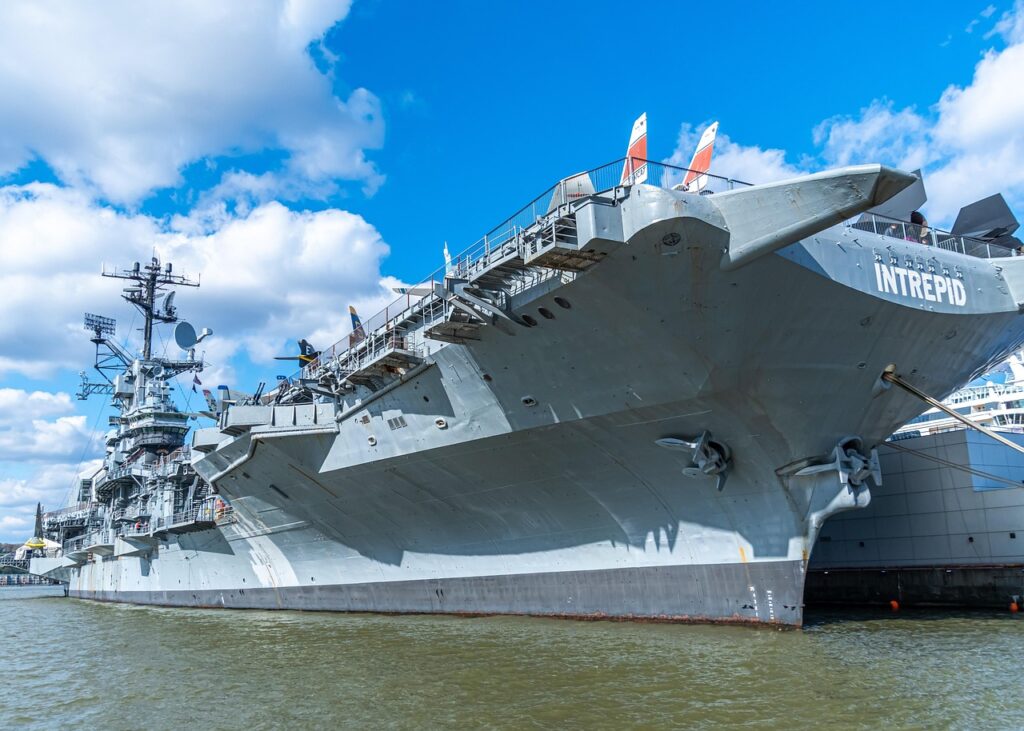
5. **Revolutionizing Carrier Airpower: J-35 and Advanced AEW**An aircraft carrier’s effectiveness is intrinsically linked to the sophistication and capability of its air wing. China’s early carriers, the Liaoning and Shandong, initially deployed Shenyang J-15 fighters, a design based on the Russian Su-33. While these provided initial operational experience, the future of Chinese carrier airpower is unequivocally linked to the J-35, a stealth, carrier-borne fighter currently under development.
Analysts project that the J-35 may have entered low-rate initial production by 2025, signaling a significant leap towards fielding a fifth-generation fighter from its carriers, though formal PLAN induction has not yet been announced. This stealth capability would provide a crucial qualitative advantage, enabling Chinese carrier groups to operate with enhanced survivability and offensive punch against advanced adversaries. Moreover, early trials and imagery confirm that catapult-compatible J-15 variants are already operating from the Fujian, demonstrating the flexibility and evolving nature of China’s air wing development.
Beyond fighter aircraft, the Fujian’s catapults unlock another vital capability: the deployment of fixed-wing Airborne Early Warning (AEW) aircraft, such as the KJ-600. As the context notes, these AEW aircraft “greatly extend a carrier group’s radar ‘horizon’.” This capability is crucial for enhancing situational awareness, detecting threats at greater distances, and coordinating complex air and naval operations. The integration of advanced fighters and dedicated AEW platforms signifies China’s commitment to building comprehensive and highly capable carrier strike groups, mirroring the multi-role capabilities of the world’s most advanced navies.
Military equipment: Grumman F-14 Tomcat
Name: F-14 Tomcat
AircraftType: Interceptor aircraft,air superiority fighter
NationalOrigin: United States
Manufacturer: Grumman
FirstFlight: Start date and age
Introduction: Start date and age
Retired: United States Navy
Status: In service with Iran
PrimaryUser: United States Navy
MoreUsers: Air force history of Iran,Islamic Republic of Iran Air Force
NumberBuilt: 712
Produced: 1969–1991
Categories: 1970s United States fighter aircraft, Aircraft first flown in 1970, Aircraft specs templates using more performance parameter, Aircraft specs templates using more power parameter, Aircraft with retractable tricycle landing gear
Summary: The Grumman F-14 Tomcat is an American carrier-capable supersonic, twin-engine, tandem two-seat, twin-tail, all-weather-capable variable-sweep wing fighter aircraft. The Tomcat was developed for the United States Navy’s Naval Fighter Experimental (VFX) program after the collapse of the General Dynamics-Grumman F-111B project. A large and well-equipped fighter, the F-14 was the first of the American Teen Series fighters, which were designed incorporating air combat experience against smaller, more maneuverable MiG fighters during the Vietnam War.
The F-14 first flew on 21 December 1970 and made its first deployment in 1974 with the U.S. Navy aboard the aircraft carrier USS Enterprise, replacing the McDonnell Douglas F-4 Phantom II. The F-14 served as the U.S. Navy’s primary maritime air superiority fighter, fleet defense interceptor, and tactical aerial reconnaissance platform into the 2000s. The Low Altitude Navigation and Targeting Infrared for Night (LANTIRN) pod system was added in the 1990s and the Tomcat began performing precision ground-attack missions. The Tomcat was retired by the U.S. Navy on 22 September 2006, supplanted by the Boeing F/A-18E/F Super Hornet. Several retired F-14s have been put on display across the US.
Having been exported to Pahlavi Iran under the Western-aligned Shah Mohammad Reza Pahlavi in 1976, F-14s were used as land-based interceptors by the Imperial Iranian Air Force. Following the Iranian Revolution in 1979, the Islamic Republic of Iran Air Force used them during the Iran–Iraq War. Iran claimed their F-14s shot down at least 160 Iraqi aircraft during the war (with 55 of these confirmed), while 16 Tomcats were lost, including seven losses to accidents.
As of 2024, the F-14 remains in service with Iran’s air force, though the number of combat-ready aircraft is low due to a lack of spare parts. During the Iran–Israel war in June 2025, the Israeli Air Force shared footage of airstrikes destroying five Iranian F-14s on the ground.
Get more information about: Grumman F-14 Tomcat
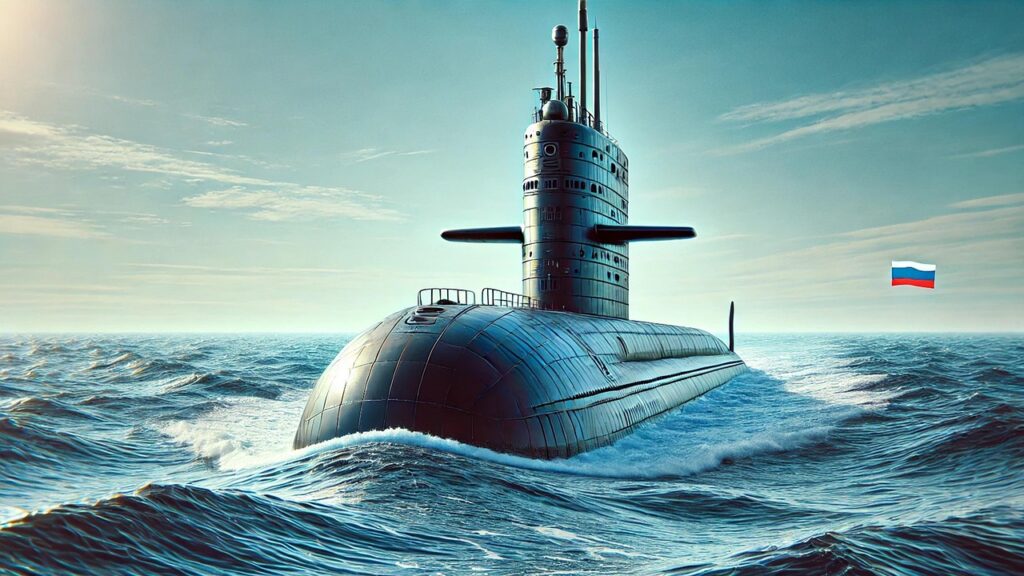
6. **Advanced Surface and Subsurface Fleets: Type 055 Destroyers and Jin-Class Submarines**China’s naval modernization extends far beyond its carrier fleet, encompassing a comprehensive buildup of its surface and subsurface combatants. At the forefront of its surface fleet are the Type 055 destroyers, formidable 13,000-ton multi-role warships. These vessels are designed for a wide array of missions, ranging from anti-air and anti-submarine warfare to anti-ship operations. With eight units already operational and a ninth under construction, the Type 055 represents a significant qualitative improvement, enhancing China’s ability to operate far beyond its immediate borders.
Complementing these destroyers are advanced amphibious ships, such as the Type 075 helicopter carriers, exemplified by the Hainan. These vessels are crucial for power projection, particularly in strategic areas like the Indian Ocean and Southeast Asia, by facilitating amphibious assaults and deploying helicopters for various roles. The combination of Type 055 destroyers and Type 075 amphibious assault ships provides the PLAN with flexible and potent forces for both high-intensity combat and expeditionary operations.
Underneath the waves, China operates a substantial submarine fleet of approximately 70 vessels. A critical component of this fleet is the nuclear-powered Jin-class submarines (Type 094), which are armed with JL-2 ballistic missiles. These submarines provide Beijing with a sea-based nuclear strike capability, a cornerstone of any truly global military power. The expansion and modernization of this diversified fleet—from cutting-edge destroyers and amphibious ships to nuclear-armed submarines—solidify China’s position as a burgeoning world-class naval force with growing global reach.
Military equipment: DDG 1000 Elmo Zumwalt Class Destroyer
Manufacturer: General Dynamics Bath Iron Works
Categories: Destroyers, Navy Equipment, Navy Ships and Submarines, Ships and Submarines
Get more information about: DDG 1000 Elmo Zumwalt Class Destroyer
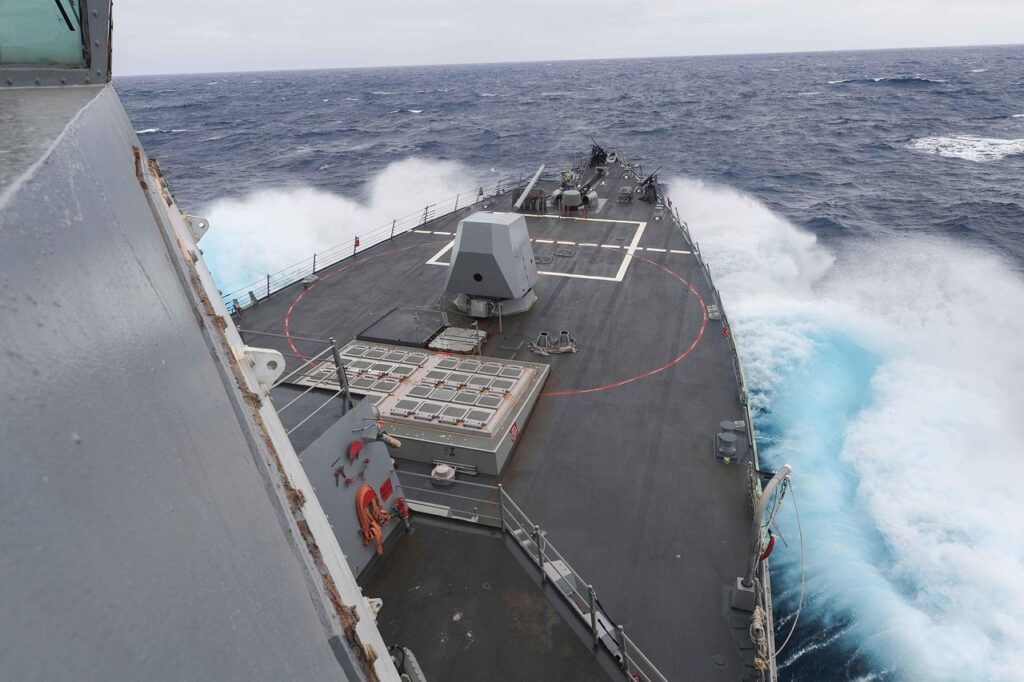
7. **Military-Civilian Fusion and Naval Base Expansion**A key strategic advantage underpinning China’s rapid naval buildup is its policy of “military-civilian fusion.” This concept, heavily promoted by President Xi Jinping, integrates the commercial and military sectors, allowing civilian shipyards and their expertise to directly support naval production. As state media describes, military and civilian shipyards “work hand in hand” in locations like Dalian, Beijing’s “flagship shipyard.” This dual-use capability allows China to build warships “faster than anyone else,” with Nick Childs noting that “The Chinese shipbuilding capacity is something like 200 times overall that of the United States.”
This fusion not only accelerates production but also ensures that China can quickly generate new ships, a “huge strategic advantage” in any protracted conflict. Matthew Funaiole from CSIS’s China Power Project emphasizes that in a sustained war effort, the ability to rapidly produce new assets, including commercial ships for transport and logistics, would be critical, potentially outpacing competitors who lack this integrated capacity. This allows China to “put more assets into the water more quickly and readily,” a fundamental question of strategic endurance.
Furthermore, China is pouring significant funding into expanding its naval bases to support its growing fleet and extend its operational reach. Satellite imagery obtained by BBC Verify from Hainan, an island province in the South China Sea, reveals the construction of five new piers at the Yulin base within the last five years. This expansion is thought to be designed to base all of China’s largest submarines, the Jin-class (or Type 094), in this port, which can carry 12 nuclear missiles each. Such infrastructure development is vital for maintaining, resupplying, and deploying a modern blue-water navy, illustrating China’s commitment to establishing a robust global logistical footprint.
While China’s People’s Liberation Army Navy (PLAN) has undergone an undeniable quantitative expansion, its ambitions for global power projection are critically undermined by several systemic vulnerabilities. Moving beyond the impressive statistics of its burgeoning fleet, a rigorous assessment reveals significant weaknesses that temper its capacity as a truly credible maritime force. This section will critically evaluate the core deficiencies that challenge the PLAN’s strategic objectives, from its operational inexperience and technological inconsistencies to controversial export practices and persistent geopolitical constraints.
Military equipment: United States Naval Research Laboratory
Name: U.S. Naval Research Laboratory
Logo: Naval Research Laboratory Logo.png
Caption: Aerial view in 2021
LogoSize: 160
Established: [object Object]
Type: Research
Budget: $1.1 billion
ResearchField: National security,Fundamental science
Director: [https://www.nrl.navy.mil/About-Us/Leadership/Director-of-Research/ Dr. Bruce Danly]
Staff: 2,538 civilian,86 military (2015)
City: Washington, D.C.
Country: United States
Coordinates: Coord
Module: Infobox military unit
UnitName: U.S. Naval Research Laboratory
Dates: 1923–present
Branch: navy,marines
Website: site
Commander1: [https://www.nrl.navy.mil/About-Us/Leadership/Commanding-Officer/ Capt. Randy C. Cruz]
Commander1Label: Commander
Commander2: [https://www.nrl.navy.mil/About-Us/Leadership/Director-of-Research/ Dr. Bruce Danly]
Commander2Label: Director of Research
Categories: 1923 establishments in the United States, All Wikipedia articles written in American English, All articles containing potentially dated statements, All articles with unsourced statements, All articles with vague or ambiguous time
Summary: The United States Naval Research Laboratory (NRL) is the corporate research laboratory for the United States Navy and the United States Marine Corps. Located in Washington, DC, it was founded in 1923 and conducts basic scientific research, applied research, technological development and prototyping. The laboratory’s specialties include plasma physics, space physics, materials science, and tactical electronic warfare. NRL is one of the first US government scientific R&D laboratories, having opened in 1923 at the instigation of Thomas Edison, and is currently under the Office of Naval Research.
As of 2016, NRL was a Navy Working Capital Fund activity, which means it is not a line-item in the US Federal Budget. Instead of direct funding from Congress, all costs, including overhead, were recovered through sponsor-funded research projects. NRL’s research expenditures were approximately $1 billion per year.
Get more information about: United States Naval Research Laboratory
Read more about: China’s Ascendant Naval Power: Unpacking Beijing’s Maritime Strategy and Its Implications for the South China Sea and Beyond
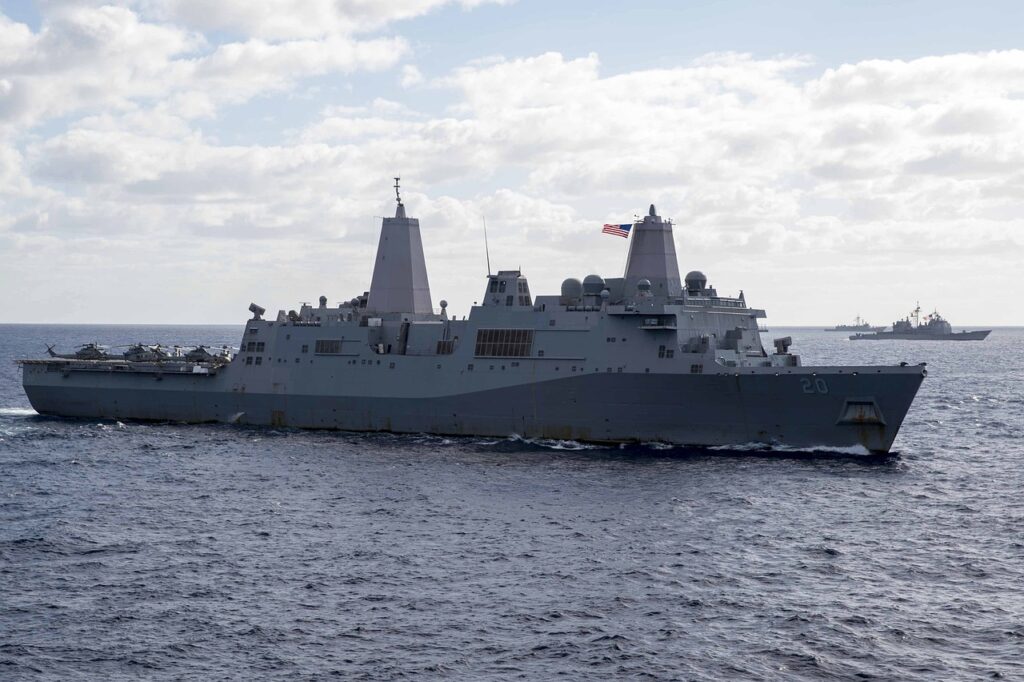
8. **Untested Combat Prowess: The PLAN’s Operational Inexperience**The sheer scale of the PLAN’s fleet stands in stark contrast to its limited practical combat experience, a glaring weakness that analysts frequently highlight. Since the Sino-Vietnamese War of 1979, China has not engaged in a major naval conflict, leaving its commanders and personnel untested in the complex and dynamic scenarios of modern naval warfare. This operational void differentiates it sharply from navies such as those of the United States, India, and Australia, which have continuously refined their expertise through decades of real-world missions, including high-intensity conflicts and joint international operations.
This experiential deficit often surfaces during naval exercises. For instance, reports indicate that during joint drills with Russia in 2021, Chinese vessels encountered difficulties in synchronizing operations, exposing notable inefficiencies in their command structures and overall interoperability. Similarly, China’s carrier strike groups, centered around the Liaoning and Shandong, are widely considered to be in a developmental phase, demonstrating limited operational readiness when compared to the well-honed capabilities of U.S. carrier strike groups. Their attempts to emulate carrier-based operations, while progressing, are hampered by this foundational inexperience.
The consequences of this lack of live combat testing are profound, potentially leaving PLAN personnel ill-prepared for the unpredictable nature of modern naval engagements. A hypothetical conflict in strategically sensitive areas such as the Taiwan Strait or the South China Sea would inevitably subject these vulnerabilities to the ultimate test, potentially revealing significant limitations in China’s naval power. This absence of battle-hardened experience represents a crucial constraint on the PLAN’s ability to operate effectively under pressure.
Further amplifying these concerns, unconfirmed accounts in August 2023 suggested a Type 093 nuclear-powered submarine experienced a catastrophic failure in the Yellow Sea, allegedly due to entanglement in underwater defenses, leading to fatal outcomes for its crew. While Beijing formally denied these claims, the incident, if true, would underscore potential deficiencies in operational readiness and adherence to safety protocols. Moreover, PLAN vessels participating in anti-piracy missions in the Gulf of Aden have faced criticism for an excessive reliance on allied forces for logistical and operational support, contrasting with the independent and effective operations typically conducted by Indian and U.S. vessels.
Military equipment: Mark V Special Operations Craft
Manufacturer: Maine Marine Manufacturing LLC
Service: USN
Armament: 7.62 mm gatling guns, .50 caliber machine guns
Engine: 2x 2285 HP MTU 12V396 TE94 engines
Payload capacity: 6,500 lbs
Operational range: 500 nautical miles
Speed: 65 knots
Categories: Navy Equipment, Navy Ships and Submarines, Ships and Submarines, Special Mission Ships and Submarines, Special Operations Equipment
Get more information about: Mark V Special Operations Craft
9. **Persistent Technological Gaps and Reliability Issues**Despite China’s rapid naval expansion, which has often prioritized the sheer quantity of vessels, significant technological vulnerabilities and reliability issues persist. While platforms like the Type 055 destroyers and Type 093 submarines are frequently celebrated as cutting-edge, their real-world performance often falls short of these expectations. This disparity between stated capabilities and demonstrated reliability is a critical point of concern for analysts scrutinizing the PLAN’s true strength.
Reports indicate that China’s indigenous weapons systems frequently do not perform as advertised. For example, the much-touted Type 055 destroyers, equipped with advanced radar and missile systems, have reportedly experienced frequent malfunctions during testing. In 2020, one such destroyer allegedly encountered propulsion issues during its maiden deployment, necessitating an early return to port, which highlighted potential flaws in its advanced design or manufacturing processes.
Further underscoring these concerns is the widely reported mishap in mid-2024 involving China’s newest nuclear submarine, which reportedly sank during construction in Wuhan. This incident at the shipyard exposed critical gaps in quality control and project oversight, leading to significant delays in China’s ambitious efforts to modernize its underwater fleet. Such setbacks reveal that while China can build rapidly, the consistent quality and reliability of its sophisticated platforms remain a challenge.
Even China’s highly publicized anti-ship missiles, such as the DF-21D “carrier killer,” have yet to demonstrate their reliability in real-world scenarios. Their ability to effectively target moving vessels in contested environments remains largely theoretical, with experts expressing doubts about their performance against advanced countermeasures employed by potential adversaries. Moreover, the Liaoning-class carriers continue to face limitations in sustained global operations, partly due to insufficient replenishment capabilities and underdeveloped logistical support infrastructure, further constraining China’s aspirations for true blue-water capability. Reports from export partners, such as Algeria’s experience with Chinese corvettes in 2019, which saw onboard sensors and weapons systems frequently malfunctioning, provide further external validation of systemic reliability issues.
Military equipment: Digital divide
Categories: All articles with bare URLs for citations, All articles with failed verification, All articles with unsourced statements, Articles with PDF format bare URLs for citations, Articles with bare URLs for citations from August 2025
Summary: The digital divide refers to unequal access to and effective use of digital technology, encompassing four interrelated dimensions: motivational, material, skills, and usage access.
The digital divide worsens inequality around access to information and resources. In the Information Age, people without access to the Internet and other technology are at a disadvantage, for they are unable or less able to connect with others, find and apply for jobs, shop, and learn.
People living in poverty, in insecure housing or homeless, elderly people, and those living in rural communities may have limited access to the Internet; in contrast, urban middle class people have easy access to the Internet. Another divide is between producers and consumers of Internet content, which could be a result of educational disparities. While social media use varies across age groups, a US 2010 study reported no racial divide.
Get more information about: Digital divide
Read more about: Steer Clear! Unpacking 13 Overrated Car Brands That Are All Hype, No Substance – Reliability Gaps & High Upkeep Drive Frustration
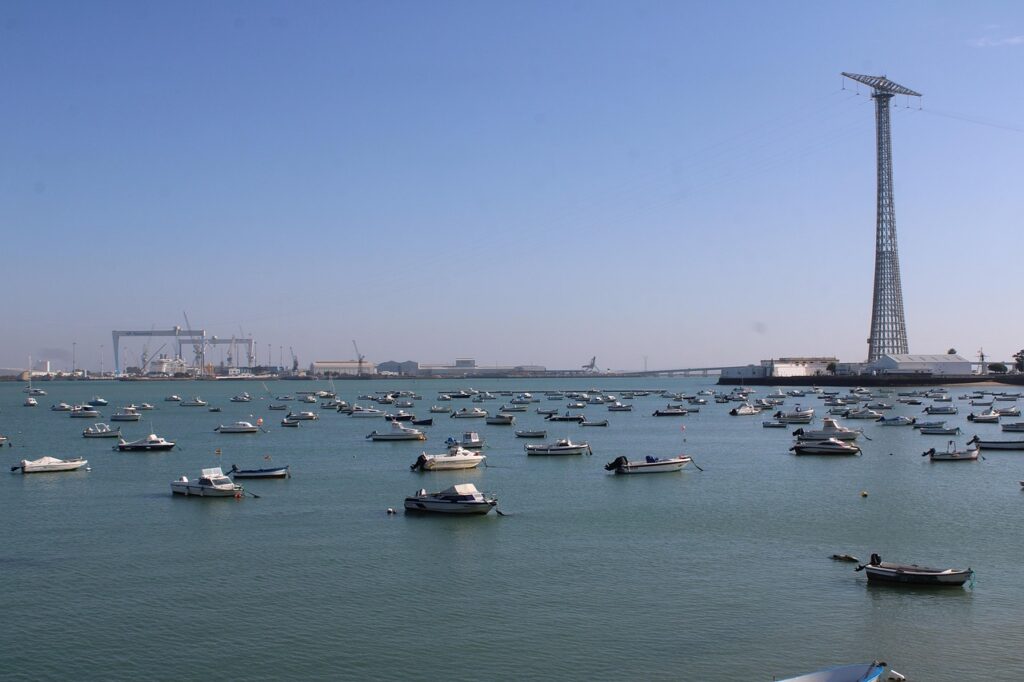
10. **The Burden of Substandard Naval Exports**China’s strategy to extend its influence, particularly within the Indian Ocean Region (IOR), heavily relies on supplying naval equipment to smaller nations. However, this approach often carries hidden costs for recipient countries, primarily in the form of substandard quality and limited operational lifespans. This practice not only undercuts the effectiveness of these navies but also raises questions about China’s commitment as a reliable defence partner.
A salient example is Bangladesh’s 2017 acquisition of two Ming-class submarines. These vessels, marketed as modern assets, quickly revealed outdated technology and high maintenance demands. Instead of bolstering Bangladesh’s strategic capabilities, they became more of a financial and operational liability, requiring substantial ongoing investment merely to remain functional, thereby undermining their intended strategic value.
Sri Lanka’s experience with Chinese-built frigates further highlights these issues. The P625 frigate, gifted by China in 2019, reportedly suffered frequent breakdowns attributed to poor manufacturing standards. Such incidents erode the trust of recipient nations and contribute to a growing perception that China prioritizes quantity or political leverage over the delivery of reliable, high-quality defence platforms. This ultimately tarnishes Beijing’s reputation as a dependable defence supplier.
The issues are not limited to smaller vessels or older designs. Thailand’s planned purchase of Yuan-class submarines, a more advanced platform, faced an indefinite delay in 2022. This occurred when Germany refused to supply critical propulsion components due to export restrictions, a situation that starkly exposed China’s persistent dependence on foreign suppliers for key technologies in its supposedly indigenous advanced platforms. Such reliance directly contradicts China’s narrative of self-reliance and further discredits its ability to deliver fully independent and robust naval solutions to its partners.
Military equipment: São Paulo (state)
Name: São Paulo
SettlementType: Federative units of Brazil
Nickname: Bandeirante State
Motto: native name
Anthem: Bandeirantes Anthem
MapCaption: Location in Brazil
Coordinates: Wikidatacoord
SubdivisionType: List of sovereign states
SubdivisionName: Brazil
SubdivisionType1: Regions of Brazil
SubdivisionName1: Southeast Region, Brazil
SeatType: Capital and largest city
Seat: São Paulo
LeaderTitle: List of governors of São Paulo
LeaderName: Tarcísio de Freitas
LeaderTitle1: Vice Governor
LeaderName1: Felicio Ramuth
LeaderTitle2: Federal Senate (Brazil)
LeaderName2: Alexandre Giordano
GoverningBody: Legislative Assembly of São Paulo
UnitPref: Metric
AreaTotalKm2: 248219.5
AreaRank: Federative units of Brazil#List
PopulationTotal: 44411238
PopulationAsOf: 2022
PopulationDensityKm2: auto
PopulationEst: 46004000
PopEstAsOf: 2023
PopulationRank: Federative units of Brazil#List
PopulationDensityRank: Federative units of Brazil#List
PopulationDemonym: Paulistas,Caipiras,Bandeirante
DemographicsType1: List of countries by GDP (nominal)
Demographics1Title1: Year
Demographics1Info1: 2021
Demographics1Title2: Total
Demographics1Info2: Brazilian real
Demographics1Title3: Per capita
Demographics1Info3: List of Brazilian federative units by gross regional domestic product
BlankNameSec1: Human Development Index
BlankInfoSec1: 2022
Blank2NameSec1: Category
Blank2InfoSec1: List of Brazilian federative units by Human Development Index
Blank3NameSec1: 2021
Timezone1: Time in Brazil
UtcOffset1: -03:00
PostalCodeType: Código de Endereçamento Postal
PostalCode: 01000-000 to 19990-000
IsoCode: ISO 3166-2:BR
Website: https://sp.gov.br/sp
Categories: All articles with dead external links, All articles with unsourced statements, Articles containing Latin-language text, Articles containing Portuguese-language text, Articles with Portuguese-language sources (pt)
Summary: São Paulo (, Portuguese: [sɐ̃w ˈpawlu] ) is one of the 26 states of the Federative Republic of Brazil and is named after Saint Paul of Tarsus. It is located in the Southeast Region and is bordered by the states of Minas Gerais to the north and northeast, Paraná to the south, Rio de Janeiro to the east and Mato Grosso do Sul to the west, in addition to the Atlantic Ocean to the southeast. It is divided into 645 municipalities. The total area is 248,219.481 square kilometres (95,838.077 square miles) km2, which is equivalent to 2.9% of Brazil’s surface, being slightly larger than the United Kingdom. Its capital is the municipality of São Paulo.
With more than 44 million inhabitants in 2022, São Paulo is the most populous Brazilian state (around 22% of the Brazilian population), the world’s 28th-most-populous sub-national entity and the most populous sub-national entity in the Americas, and the fourth-most-populous political entity of South America, surpassed only by the rest of the Brazilian federation, Colombia, and Argentina. The local population is one of the most diverse in the country and descended mostly from Italians, who began immigrating to the country in the late 19th century; the Portuguese, who colonized Brazil and installed the first European settlements in the region; Indigenous peoples, many distinct ethnic groups; Africans, who were brought from Africa as enslaved people in the colonial era and migrants from other regions of the country. In addition, Arabs, Armenians, Chinese, Germans, Greeks, Japanese, Spanish and American Southerners also are present in the ethnic composition of the local population.
Today’s area corresponds to the state territory inhabited by Indigenous peoples from approximately 12,000 BC. In the early 16th century, the coast of the region was visited by Portuguese and Spanish explorers and navigators. In 1532 Martim Afonso de Sousa would establish the first Portuguese permanent settlement in the Americas—the village of São Vicente, in the Baixada Santista. In the 17th century, the paulistas bandeirantes intensified the exploration of the colony’s interior, which eventually expanded the territorial domain of Portugal and the Portuguese Empire in South America, this would later result in the state being nicknamed the “Bandeirante State”.
In the 18th century, after the establishment of the province of São Paulo, the region began to gain political weight. After independence in 1822, São Paulo began to become a major agricultural producer (mainly coffee) in the newly constituted Empire of Brazil, which ultimately created a rich regional rural oligarchy, which would switch on the command of the Brazilian government with Minas Gerais’s elites during the early republican period in the 1890s. Under the Vargas Era, the state was one of the first to initiate a process of industrialization and its population became one of the most urban of the federation.
São Paulo’s economy is very strong and diversified, having the largest industrial, scientific and technological production in the country—being the largest national research and development hub and home to the best universities and institutes—, the world’s largest production of orange juice, sugar and ethanol, and the highest GDP among all Brazilian states, being the only one to exceed the one-trillion-real range. In 2020, São Paulo’s economy accounted for around 31.2% of the total wealth produced in the country—which made the state known as the “locomotive of Brazil”—and this is reflected in its cities, many of which are among the richest and most developed in the country. Therefore, if it were a sovereign country, its nominal GDP would be the 21st largest in the world (2020 estimate). In addition to the economy, São Paulo is acknowledged as a major Brazilian tourist destination by national and international tourists due to its natural beauty, historical and cultural heritage—it has multiple sites inscribed on the UNESCO World Heritage List—, inland resorts, climate and great vocation for the service, business, entertainment, fashion sectors, culture, leisure, health, education, and many others. It has high social indices compared to those recorded in the rest of the country, such as the second-highest Human Development Index (HDI), the fourth GRDP per capita, the second-lowest infant mortality rate, the third-highest life expectancy, the lowest homicide rate, and the third-lowest rate of illiteracy among the federative units of Brazil.
Get more information about: São Paulo (state)

11. **Debt Diplomacy and Strategic Dependency**Beyond the provision of substandard equipment, China’s engagement strategy in the IOR and beyond involves using dual-use infrastructure projects to foster profound economic and strategic dependency. Ports such as Hambantota in Sri Lanka and Gwadar in Pakistan are frequently presented as purely commercial ventures, yet they are often leveraged for strategic military purposes, creating a complex web of influence. These projects typically saddle recipient nations with significant debt, granting Beijing outsized control over their maritime policies and infrastructure.
This approach starkly contrasts with the practices of Western and leading Southeast Asian defence suppliers, including India, who frequently incorporate technology transfer agreements into their deals. Chinese exports, however, are typically delivered as end-products with minimal provisions for post-sale support or knowledge sharing. A clear illustration of this dynamic is Pakistan’s acquisition of Chinese-built Type 054A frigates; despite their advanced specifications, these vessels lack compatibility with Western systems, thereby limiting Pakistan’s operational flexibility and integrating them more deeply into China’s sphere of influence.
China’s reluctance to share critical maintenance know-how further exacerbates this dependency, forcing buyers to rely continuously on Chinese technicians for repairs and necessary upgrades. This strategy ensures a protracted reliance on Beijing for the operational viability of these assets. For instance, in the Maldives, Chinese-built harbour facilities remain significantly underutilized due to insufficient local expertise and a lack of proper maintenance support, further entrenching dependency on Chinese contractors and expertise. These practices underscore a deliberate strategy to cultivate long-term economic and strategic leverage rather than fostering genuine self-reliance among partner nations.
Military equipment: Debt-trap diplomacy
Categories: All Wikipedia articles written in South African English, All accuracy disputes, All articles containing potentially dated statements, All articles lacking reliable references, All articles with unsourced statements
Summary: Debt-trap diplomacy is a term to describe an international financial relationship where a creditor country or institution extends debt to a borrowing nation partially, or solely, to increase the lender’s political leverage. The creditor country is said to extend excessive credit to a debtor country with the intention of extracting economic or political concessions when the debtor country becomes unable to meet its repayment obligations. The conditions of the loans are often not publicized. The borrowed money commonly pays for contractors and materials sourced from the creditor country.
A neologism, the term was first coined by Indian academic Brahma Chellaney in 2017 to contend that the Chinese government lends and then leverages the debt burden of smaller countries for geopolitical ends. The term “debt-trap diplomacy” has entered the official lexicon of the United States, with three successive administrations employing the term in public diplomacy. Many academics, professionals, and think tanks have rejected the hypothesis, concluding that China’s lending practices are not behind the debt troubles faced by borrowing nations, and that Chinese banks have never seized an asset from any nation, and are willing to restructure the terms of existing loans.
While not applying to Chinese practices, the term has been found useful to describe actions by the International Monetary Fund aimed at introducing privatization or austerity.
Get more information about: Debt-trap diplomacy
Read more about: Behind the Drone Curtain: Unpacking Russia’s Ambitious Drive to Dominate Unmanned Warfare

12. **Geopolitical Challenges and Regional Scepticism**The vulnerabilities inherent in the PLAN’s rapid expansion have significant implications for global and regional security, particularly within the Indo-Pacific. A growing skepticism regarding China’s maritime strategy is evident among key regional players and global powers. Nations such as the Quad partners—India, Japan, Australia, and the United States—have increasingly emphasized the importance of qualitative naval capabilities over sheer numerical strength, implicitly contrasting their battle-tested fleets with China’s largely unproven force.
India’s robust naval engagements in the IOR, encompassing vital anti-piracy operations, critical humanitarian assistance, and extensive multilateral exercises, exemplify a distinctly different approach. This proactive and collaborative stance sharply contrasts with China’s often transactional methodology, bolstering India’s credibility as a reliable and effective regional security provider. The varied operational experiences and demonstrated reliability of these established navies serve as a benchmark that the PLAN currently struggles to meet.
Moreover, China’s ambitions to project power into distant regions like the Arctic and Atlantic remain significantly constrained by substantial logistical and infrastructural deficiencies. Unlike the U.S. and European navies, which operate with seamless global reach supported by extensive networks of forward operating bases and replenishment capabilities, the PLAN’s operations are largely confined to the South and East China Seas. This limitation underscores its current inability to sustain extended missions far from its immediate home waters, hindering its aspirations for true global presence.
Adding to these challenges, China’s inability to consistently provide adequate post-sale support for its defence exports has inadvertently opened doors for other competitors in the global defence market. South Korea and Turkey, for instance, are increasingly gaining traction in markets traditionally targeted by China, by offering technologically superior products coupled with robust after-sales services and more transparent technology transfer arrangements. This growing competition highlights a critical aspect of naval power: long-term partnerships built on trust and reliability, areas where China faces considerable hurdles.
Military equipment: Euroscepticism
Categories: All Wikipedia articles in need of updating, All articles containing potentially dated statements, All articles with dead external links, All articles with unsourced statements, Articles containing potentially dated statements from November 2015
Summary: Euroscepticism, also spelled as Euroskepticism or EU-scepticism, is a political position involving criticism of the European Union (EU) and European integration. It ranges from those who oppose some EU institutions and policies and seek reform (Eurorealism, Eurocritical, or soft Euroscepticism), to those who oppose EU membership and see the EU as unreformable (anti-European Unionism, anti-EUism, or hard Euroscepticism). The opposite of Euroscepticism is known as pro-Europeanism.
The main drivers of Euroscepticism have been beliefs that integration undermines national sovereignty and the nation state, that the EU is elitist and lacks democratic legitimacy and transparency, that it is too bureaucratic and wasteful, that it encourages high levels of immigration, or perceptions that it is a neoliberal organisation serving the big business elite at the expense of the working class, that it is responsible for austerity, and drives privatization.
Euroscepticism is found in groups across the political spectrum, both left-wing and right-wing, and is often found in populist parties. Although they criticise the EU for many of the same reasons, Eurosceptic left-wing populists focus more on economic issues, such as the European debt crisis and the Transatlantic Trade and Investment Partnership, while Eurosceptic right-wing populists focus more on nationalism and immigration, such as the 2015 European migrant crisis. The rise in radical-right parties since the 2000s is strongly linked to a rise in Euroscepticism.
Eurobarometer surveys of EU citizens show that trust in the EU and its institutions declined strongly from 2007 to 2015. In that period, it was consistently below 50%. A 2009 survey showed that support for EU membership was lowest in the United Kingdom (UK), Latvia, and Hungary. By 2016, the countries viewing the EU most unfavourably were the UK, Greece, France, and Spain. The 2016 United Kingdom European Union membership referendum resulted in a 51.9% vote in favour of leaving the EU (Brexit), a decision that came into effect on 31 January 2020.
Since 2015, trust in the EU has risen in most EU countries as a result of falling unemployment rates and the end of the migrant crisis. A post-2019 election Eurobarometer survey showed that 68% of citizens support the EU, the highest level since 1983; however, sentiment that things are not going in the right direction in the EU had increased to 50%. Trust in the EU had increased significantly at the beginning of the COVID-19 pandemic with levels varying across member states.
In March 2025, support for the European Union reached an all-time high among citizens of EU members states. A Eurobarometer poll conducted in January and February found that 74% of EU citizens believe their country’s membership in the bloc is beneficial, the highest level recorded since the question was first introduced in 1983. The decline in Euroscepticism has been attributed to growing security concerns amid ongoing geopolitical instability, including the continuation of Russia’s invasion of Ukraine and renewed transatlantic tensions under Donald Trump, who has been critical of NATO and the European Union.
Get more information about: Euroscepticism
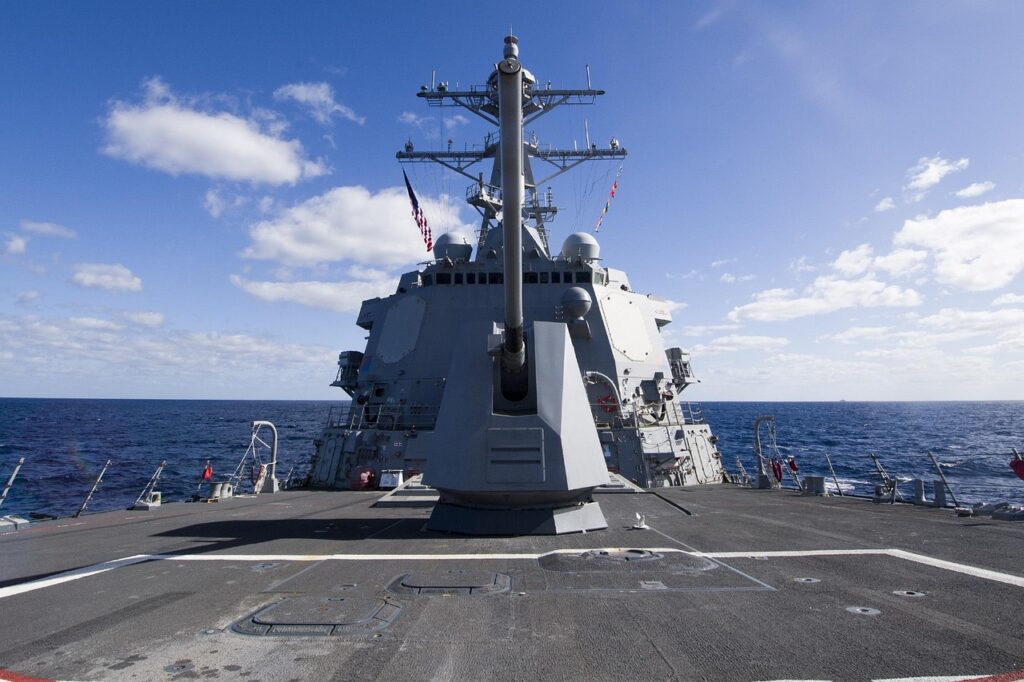
13. **Historical Context and Strategic Limitations**China’s naval strategy has historically been profoundly shaped by a defensive posture, prioritizing coastal security in the wake of what it terms the “Century of Humiliation.” This period, during which China experienced extensive subjugation by Western and Japanese naval forces, continues to heavily influence its focus on achieving regional dominance. However, this historical baggage inadvertently limits China’s capacity for true global power projection, as evidenced by its comparatively restricted presence in vital oceanic regions such as the Arctic and Atlantic, especially when juxtaposed against the expansive operations of the U.S. and European navies.
A significant drawback of China’s current naval development is its discernible overreliance on numerical superiority rather than a consistent qualitative advancement across all platforms. Despite constructing a vast fleet, the PLAN still lacks the comprehensive support infrastructure essential for sustained global operations. This includes a deficiency in crucial replenishment ships and a limited network of overseas bases, which are indispensable for maintaining a blue-water navy capable of prolonged deployments far from home.
The logistical constraints arising from this shortfall became acutely evident during the 2021 evacuation mission in Yemen, where Chinese vessels reportedly struggled to coordinate effectively with allied forces due to these very logistical impediments. Such incidents underscore a fundamental weakness: a powerful fleet requires an equally robust logistical tail to truly project and sustain power across vast oceanic distances. This structural limitation prevents the PLAN from operating with the same independence and endurance as established global naval forces, hindering its ability to execute complex, long-range missions without significant operational challenges.
Military equipment: SWOT analysis
Categories: Articles with short description, Business intelligence terms, CS1: long volume value, CS1 maint: article number as page number, Commons category link from Wikidata
Summary: In strategic planning and strategic management, SWOT analysis (also known as the SWOT matrix, TOWS, WOTS, WOTS-UP, and situational analysis) is a decision-making technique that identifies the strengths, weaknesses, opportunities, and threats of an organization or project.
SWOT analysis evaluates the strategic position of organizations and is often used in the preliminary stages of decision-making processes to identify internal and external factors that are favorable and unfavorable to achieving goals. Users of a SWOT analysis ask questions to generate answers for each category and identify competitive advantages.
SWOT has been described as a “tried-and-true” tool of strategic analysis, but has also been criticized for limitations such as the static nature of the analysis, the influence of personal biases in identifying key factors, and the overemphasis on external factors, leading to reactive strategies. Consequently, alternative approaches to SWOT have been developed over the years.
Get more information about: SWOT analysis
Read more about: Is a New TV Truly Worth It? Unpacking the Game-Changing Technologies Redefining Your Living Room

14. **Overarching Obstacles to Global Naval Primacy**Beyond the specific vulnerabilities identified, several overarching factors are poised to significantly hinder China’s ambitious aspiration to become the world’s leading naval power by 2050. These multifaceted challenges encompass economic, technological, geopolitical, and operational dimensions, collectively presenting a formidable set of constraints on Beijing’s maritime trajectory. The confluence of these factors suggests that while China’s progress is undeniable, its path to unchallenged global naval primacy is fraught with considerable obstacles.
Firstly, potential economic constraints, such as slower growth rates or unforeseen financial crises, could severely limit the resources available for the sustained, intensive investment required for continuous naval modernization. Such economic shifts would directly impact shipbuilding programs, technological research, and the expansion of supporting infrastructure, thereby decelerating the PLAN’s growth trajectory and potentially forcing a reassessment of its ambitious timeline.
Secondly, China’s continued dependence on critical technology imports for advanced naval systems, as highlighted by incidents like Thailand’s submarine deal, exposes it to significant risks. International sanctions or restrictions on these key components could severely impede its ability to innovate and upgrade its fleet, creating bottlenecks that undermine its drive for technological self-reliance. This dependency represents a strategic vulnerability in an increasingly competitive geopolitical landscape.
Furthermore, escalating regional and international tensions, particularly concerning flashpoints like Taiwan and the South China Sea, carry the inherent risk of premature conflicts. Such engagements, even if limited, could drain China’s military resources, divert focus from long-term modernization goals, and potentially trigger international responses that further isolate Beijing and complicate its naval expansion efforts. The possibility of such confrontations adds a layer of instability to its strategic planning.
Finally, the PLAN’s comparatively limited operational experience, especially when measured against the decades of combat and expeditionary deployments of the U.S. Navy, remains a critical deficiency. Coupled with its still-restricted network of overseas bases, this poses significant logistical challenges for sustaining extended global operations. An international coalition, potentially involving powers such as the U.S., India, Japan, and Australia, could also effectively counter and constrain China’s naval expansion, presenting a formidable united front that prioritizes qualitative superiority and interoperability over numerical advantage.
Military equipment: Imperial Japanese Army during the Pacific War
Name: Imperial Japanese Army
Caption: Rising Sun Flag
Founded: 1867
Disbanded: 1945
Headquarters: Tokyo
CommanderInChief: Emperor Hirohito
CommanderInChiefTitle: Tennō
Minister: Shunroku Hata,Hideki Tōjō
MinisterTitle: lang,Transliteration
ChiefOfStaff: Kotohito Kan’in,Hajime Sugiyama
ChiefOfStaffTitle: lang,Transliteration
Conscription: 17–40
Categories: Articles containing Japanese-language text, Articles with short description, Harv and Sfn no-target errors, Imperial Japanese Army, Military history of Japan during World War II
Summary: The Pacific War lasted from 1941 to 1945, with the Empire of Japan fighting against the United States, the British Empire and their allies. Most of the campaign was fought on a variety of small islands in the Pacific region. Ground fighting in the Pacific was characterized by its intense ferocity, and combat conditions were marked by illness and logistical difficulties, especially for Japanese soldiers. The Imperial Japanese Army (IJA) typically fought alone in these engagements, often with very little naval or aerial support, and the IJA quickly garnered a reputation for tenacious resistance as well as brutality.
At the beginning of the Pacific War in 1941, the Imperial Japanese Army contained 51 divisions, 27 of which were stationed in China. A further 13 divisions defended the Manchurian–Soviet border, due to concerns about a possible attack by the Soviet Union. From 1942 onwards, troops were sent to Hong Kong (23rd Army), the Philippines (14th Army), Thailand (15th Army), Burma (15th Army), the Dutch East Indies (16th Army), and Malaya (25th Army). A total of 5.473 million men served in the Imperial Japanese Army over the course of the war.
Japanese troops suffered from a shortage of supplies, especially food, medicine, munitions, and armaments, largely due to the crippling losses inflicted on Japan’s merchant fleet by Allied submarines. Logistical issues were worsened by a longstanding rivalry with the Imperial Japanese Navy, with army and navy planners generally viewing support for the other as transactional instead of collaborative. As many as two-thirds of Japan’s total military deaths were a result of illness or starvation.
Get more information about: Imperial Japanese Army during the Pacific War
China’s maritime strategy is a study in profound contrasts, where the undeniable momentum of rapid expansion confronts the stark realities of operational fragility. While the People’s Liberation Army Navy has undeniably shifted the regional balance of power and continues its ambitious trajectory, its journey towards genuine global naval primacy remains shadowed by these critical vulnerabilities. The interplay of untested combat prowess, persistent technological shortcomings, questionable export practices, and multifaceted geopolitical and historical constraints suggests that size alone, while impressive, cannot substitute for the reliability, trust, and proven capability that define a truly world-class maritime force. Until these fundamental weaknesses are comprehensively addressed, the PLAN’s formidable numerical strength may ultimately prove to be more illusion than enduring reality in the complex theatre of 21st-century naval power.

